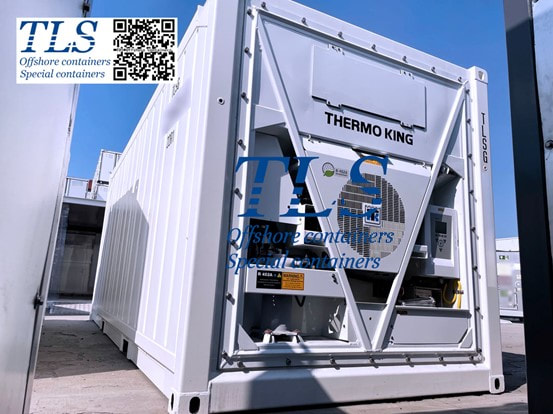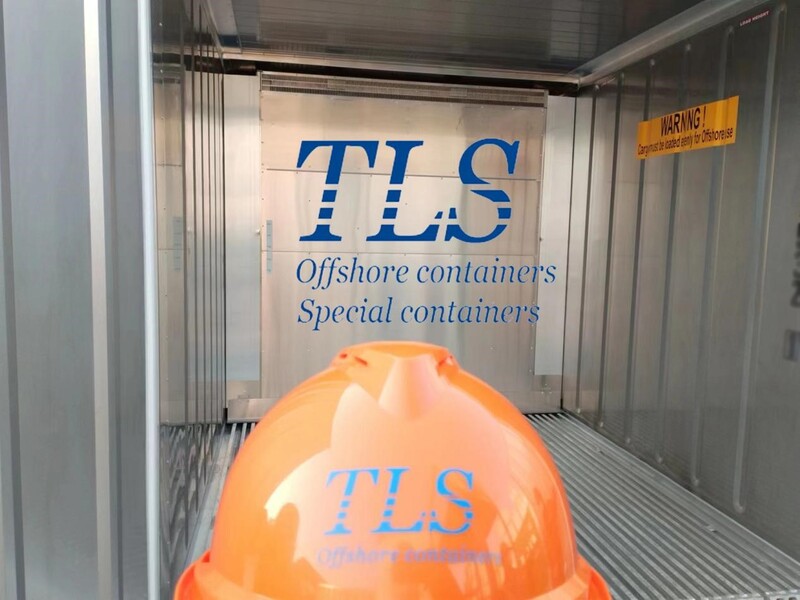|
Introduction: Perishable goods, including fresh produce, dairy, meat, and seafood, are essential in our daily lives. The storage and transportation of these goods are critical for maintaining quality. TLS's refrigeration sea containers offer an innovative approach to storing perishables, creating a controlled environment that ensures optimal conditions. In this article, we delve into the factors influencing the storage duration of perishable cargo within refrigerated sea containers, recommended storage times for different goods, and strategies for optimizing storage duration. Factors Influencing Storage Duration: Several factors impact the quality and shelf life of perishable goods stored in refrigerated sea containers. These factors encompass temperature control, humidity management, and effective air circulation. Temperature Control: Precise temperature control is key to preserving perishables. Different goods require specific temperature ranges to retain freshness. For instance, fruits and vegetables typically need temperatures between 32°F and 55°F (0°C to 13°C), while dairy and seafood may demand slightly lower temperatures. Maintaining a consistent temperature is vital, as fluctuations can hasten spoilage. Humidity Management: Humidity levels play a pivotal role in preserving perishables. Some goods are sensitive to high humidity (e.g., leafy greens), while inadequate humidity can lead to dehydration (e.g., meat). Maintaining recommended humidity levels ensures product freshness and texture. Air Circulation and Ventilation: Proper air circulation within refrigeration sea containers is crucial. Adequate airflow prevents temperature irregularities and ensures even cooling. Additionally, ventilation regulates gas concentrations, preventing the buildup of harmful gases and removing ethylene gas, which accelerates spoilage. Recommended Storage Periods for Different Goods: Fresh Fruits and Vegetables:
Dairy Products:
Meat, Poultry, and Seafood:
Factors Beyond Container Conditions: Other factors impacting storage life include:
Conclusion: TLS's refrigeration sea containers offer a solution for preserving perishable goods' quality and safety. By understanding influencing factors, maintaining temperature and humidity control, ensuring proper air circulation, and following best practices, shelf life can be extended. Monitoring, quality control, and inspection ensure consumers receive top-quality goods, minimizing waste and maximizing profit in the perishable goods industry. Any more information regarding Offshore Reefer container, ISO reefer container, please download TLS offshore reefer containers brochure for your reference TLS is an international supplier that can customize onshore | offshore special containerised solutions,Any requirements, please contact us directly: E-mail: [email protected] Hotline: +65-65637288; +65-31386967 #Perishable goods storage #Refrigeration sea containers #Storage duration of perishables #Controlled environment storage #Temperature-controlled storage #Humidity management for perishables #Air circulation in storage containers #Fresh produce preservation #Dairy product storage guidelines #Meat and seafood shelf life Written by OliverComments are closed.
|
Archives
July 2024
Categories
All
|
- Home
-
Containerised solutions
- Intelligent pressurised container | MUD logging cabin
- Battery energy storage system (BESS) container
- Flexible grid tied battery storage system
- Laboratory container | workshop container | Equipment containers
- Temporary refuge shelter | Toxic gas refuge | Safe haven
- Offshore accommodation cabin | office container
- Reefer container | Refrigerated container
- Intelligent waste water treatment container
- Fresh water generator container
- Cargo Containers
- Product photos & videos
- News & Blogs
- Contact us
|
Featured products
Intelligent pressurised container Temporary refuge (TR) shelter, toxic gas refuge (TGR) Battery energy storage system (BESS) container Containerised waste water treatment plant Fresh water generator container Reefer container Laboratory container, Workshop container Accommodation container Offshore closed container |
All Rights Reserved 2020 © TLS Offshore Containers / TLS Energy
|


